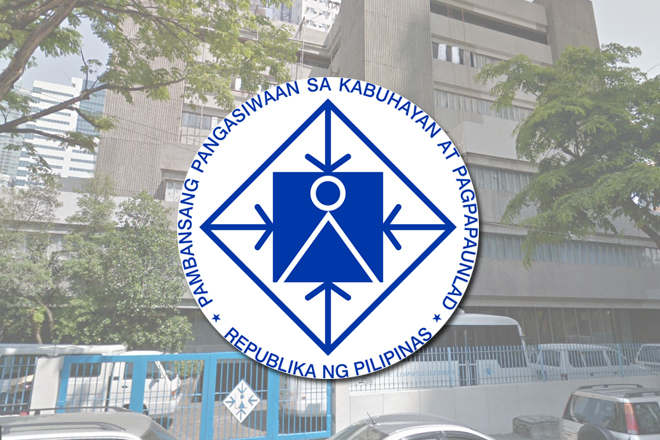DBCC adjusts targets, sees GDP to contact by 2% to 3.4% in 2020
May 13, 2020
Responding to the impact of the COVID-19 pandemic on the Philippine economy, the Development Budget Coordination Committee (DBCC) has adjusted the country’s macroeconomic indicators and fiscal program for fiscal years (FY) 2020 to 2022.
These adjustments reflect the Duterte administration’s priorities of saving lives and protecting communities, while providing support to vulnerable groups and stimulating the economy to create jobs and support growth.
These revised assumptions will also allow the government to operate with a more realistic and prudent fiscal stance as it flags the downside risks to the economy and the fiscal program for the rest of the year.
The DBCC projects Gross Domestic Product (GDP) to contract by 2.0 to 3.4 percent in 2020.
National Economic and Development Authority (NEDA) estimates suggest that the potential impact of the pandemic on the economy could reach P2.0 trillion or about 9.4 percent of GDP this year.
Timely implementation of a well-targeted recovery program, alongside efforts of the private sector, will mitigate the impact of the COVID-19 pandemic.
Such a program will help the country regain confidence, attain higher economic growth, and restore employment rates to pre-crisis levels. The DBCC thus expects the country to recover by FY 2021 with GDP growth of 7.1 to 8.1 percent.
For FY 2020, the Bangko Sentral ng Pilipinas (BSP) recommended the adoption of a lower price assumption for Dubai crude of between $23 to $38 per barrel following substantive weakness in global oil consumption amid the COVID-19 crisis.
For FY 2021 to 2022, the assumption is that the per barrel price will increase to between $35 to $50 per barrel.
The BSP also recommended a downward adjustment of FY 2020 growth assumptions for goods exports and imports to -4.0 percent and -5.5 percent, respectively.
This is in anticipation of the global economy’s sharp contraction as a result of the COVID-19 pandemic.
For FY 2021 to 2022, growth in goods exports is expected to recover to five percent while growth in goods imports is projected to bounce back to eight percent.
Assumptions for the foreign exchange rate for FY 2020 to 2022 of P50.0 to P54.0 against the USD and the current inflation target range of 2 to 4 percent are maintained.
However, the average inflation rate for FY 2020 is now projected to range from 1.75 to 3.75 percent due to subdued demand.
Expected revenue collection for this year has been revised to P2.61 trillion or 13.6 percent of GDP. This is lower by P560.5 billion or 17.7 percent compared with the 3.17 trillion program approved by the DBCC on March 27, 2020.
Disbursements for this year, meanwhile, are estimated at P4.18 trillion, which is equivalent to 21.7 percent of GDP.
This slightly exceeds the program approved in March by P12.0 billion or 0.3 percent of GDP. The emerging disbursement program takes into account the releases for COVID-19 initiatives charged to savings coming from austerity measures, among others.
With the revised revenue and disbursement program, the deficit for FY 2020 is projected to reach 1.56 trillion or 8.1 percent of GDP.
This is 2.8 percentage points higher than the estimate of 5.3 percent of GDP announced last March. The DBCC maintains that the debt level remains manageable, especially as the Philippines enjoyed its lowest-recorded debt-to-GDP ratio of 39.6 percent last year.
Despite increased deficit spending, the national government’s deficit-to-GDP ratio will remain in the median of comparable countries in ASEAN and in East Asia, among peers with similar credit ratings, and among other emerging market economies, as long as the ratio does not exceed 9.0 percent.
Below this threshold, the debt-to-GDP ratio will be around 50 percent, which is far lower than the most recent peak of 71.6 percent in 2004.
The DBCC adopted a revised FY 2021 cash budget pegged at P4.18 trillion or 19.6 percent of GDP, which is nearly the same level as the P4.10 trillion cash budget this year.
The revised FY 2021 cash budget is lower by around P460.0 billion when compared to the earlier projection of P4.64 trillion in December 2019 following the reduction in revenue estimates for FY 2021.
The DBCC noted that the Philippines has strong economic fundamentals and sound fiscal health.
At the same time, the DBCC reiterated its commitment to work with the whole of government in responding to challenges brought about by COVID-19 while helping drive a rapid economic recovery for the country.
Latest Videos
- THE UNTOLD STORY EXPERT INSIGHTS INTO THE UKRAINE
- NEGOTIATING A NEW ORDER US RUSSIA TALKS ON UKRAIN
- Ukraine: A Pawn in the Geopolitical Game? Will Trump Intervene?
- US VP VANCE CRITICIZES EUROPEAN DEMOCRACIES AT MUNICH SECURITY CONFERENCE
- UNCOVERING THE WEB OF DECEIT: CIA INFILTRATION OF THE MEDIA
- SHIFTING SANDS: TULSI GABBARD’S CONFIRMATION AND THE EVOLVING GLOBAL LANDSCAPE
- FAUCI SCANDAL: A THREAT TO GLOBAL HEALTH AND DEMOCRACY






